I have a xts time series that contains a column "timeInt" that contains the beginning of time interval expressed as the number of millisecond. The end of the time interval can be obtained by adding 600000 milliseconds (10 minutes) to this value. The range of my data, then, should have a periodicity of 10 minutes for a day (from 00.00 to 23:50).
So I have this xts
>head(sms, n=8)
squareId smsIN smsOUT
2013-12-01 1 0.11098917 0.16621437
2013-12-01 1 NA NA
2013-12-01 10 0.05482169 0.09364877
2013-12-01 10 NA NA
2013-12-01 100 0.04077425 NA
2013-12-01 1000 0.65962509 0.73610317
2013-12-01 10000 0.01432295 NA
As you can see I have a field "squareId" that is referred to the a cell in a map. There are 1000 cells
>range(sms$squareId)
[1] 1 10000
The problem is that I think I can't get the correct periodicity for my data
>periodicity(sms)
0 seconds periodicity from 2013-12-01 to 2013-12-01 23:50:00
Indeed, if I plot the xts I get this (I plot only one hour cause I have a large xts)
>plot.zoo(sms['T08:00/T09:00',-c(1)], plot.type = 'multiple' )
I tried to adjust the index applying the to.period() function
>to.period(sms, period='seconds', OHLC = F)
and it seems that I get a correct periodicity
10 minute periodicity from 2013-12-01 to 2013-12-01 23:50:00
Plotting it seems all ok
but I realize that applying to.period() many squareId are lost
> range(mi.dec01_xts$squareId)
[1] 9895 9999
The question is, how can adjust my xts of 10 min interval correctly?
How can I apply the to.period() function without lose the squareId information?
EDIT
Here I paste a reproducible example using reproduce.R
This is what the sample looks like:
squareId smsIN smsOUT
2013-12-01 00:00:00 1 0.11098917 0.16621437
2013-12-01 00:00:00 1 NA NA
2013-12-01 00:00:00 10 0.05482169 0.09364877
2013-12-01 00:00:00 10 NA NA
2013-12-01 00:00:00 100 0.04077425 NA
2013-12-01 00:00:00 100 0.16140787 0.12063361
2013-12-01 00:00:00 1000 0.65962509 0.73610317
2013-12-01 23:50:00 9998 NA NA
2013-12-01 23:50:00 9999 0.17198955 NA
2013-12-01 23:50:00 9999 0.08876703 NA
sms <- structure(c(1, 1, 10, 10, 100, 100, 1000, 9998, 9999, 9999,
0.110989169614244,NA, 0.0548216917417026, NA, 0.0407742548283372,
0.161407867214471,0.659625094191792, NA, 0.171989545769285,
0.0887670343758315,0.166214368861216, NA, 0.0936487714299922, NA, NA,
0.120633612386134,0.736103165655047, NA, NA, NA),
.indexCLASS = c("POSIXlt", "POSIXt"), tclass = c("POSIXlt", "POSIXt"),
.indexTZ = "UTC", tzone = "UTC", class = c("xts","zoo"),
index = structure(c(1385856000, 1385856000, 1385856000,1385856000,
1385856000, 1385856000, 1385856000, 1385941800, 1385941800,1385941800),
tzone = "UTC", tclass = c("POSIXlt", "POSIXt")), .Dim = c(10L,3L),
.Dimnames = list(NULL, c("squareId", "smsIN", "smsOUT")))

